Andrea Peruffo
Fossil 2.0: Formal Certificate Synthesis for the Verification and Control of Dynamical Models
Nov 16, 2023Abstract:This paper presents Fossil 2.0, a new major release of a software tool for the synthesis of certificates (e.g., Lyapunov and barrier functions) for dynamical systems modelled as ordinary differential and difference equations. Fossil 2.0 is much improved from its original release, including new interfaces, a significantly expanded certificate portfolio, controller synthesis and enhanced extensibility. We present these new features as part of this tool paper. Fossil implements a counterexample-guided inductive synthesis (CEGIS) loop ensuring the soundness of the method. Our tool uses neural networks as templates to generate candidate functions, which are then formally proven by an SMT solver acting as an assertion verifier. Improvements with respect to the first release include a wider range of certificates, synthesis of control laws, and support for discrete-time models.
A General Verification Framework for Dynamical and Control Models via Certificate Synthesis
Sep 12, 2023Abstract:An emerging branch of control theory specialises in certificate learning, concerning the specification of a desired (possibly complex) system behaviour for an autonomous or control model, which is then analytically verified by means of a function-based proof. However, the synthesis of controllers abiding by these complex requirements is in general a non-trivial task and may elude the most expert control engineers. This results in a need for automatic techniques that are able to design controllers and to analyse a wide range of elaborate specifications. In this paper, we provide a general framework to encode system specifications and define corresponding certificates, and we present an automated approach to formally synthesise controllers and certificates. Our approach contributes to the broad field of safe learning for control, exploiting the flexibility of neural networks to provide candidate control and certificate functions, whilst using SMT-solvers to offer a formal guarantee of correctness. We test our framework by developing a prototype software tool, and assess its efficacy at verification via control and certificate synthesis over a large and varied suite of benchmarks.
Data-driven Abstractions with Probabilistic Guarantees for Linear PETC Systems
Mar 10, 2022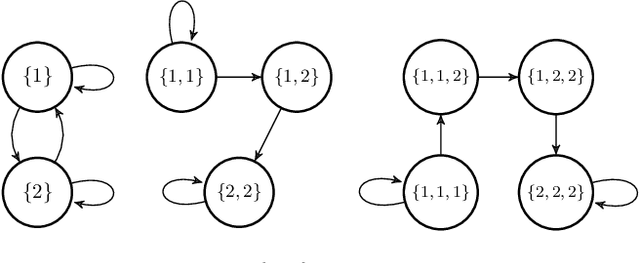
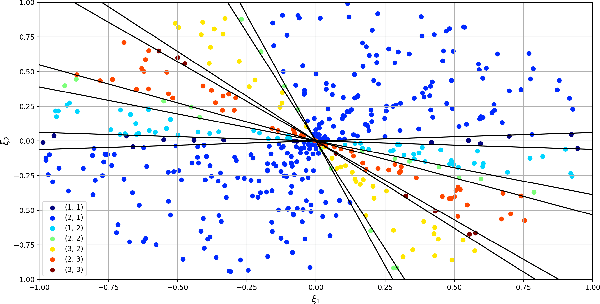
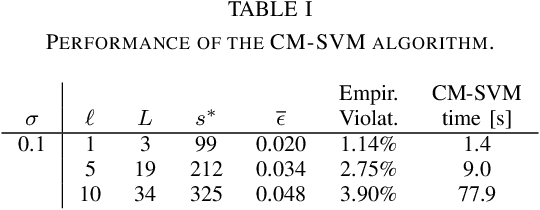

Abstract:We employ the scenario approach to compute probably approximately correct (PAC) bounds on the average inter-sample time (AIST) generated by an unknown PETC system, based on a finite number of samples. We extend the scenario approach to multiclass SVM algorithms in order to construct a PAC map between the concrete, unknown state-space and the inter-sample times. We then build a traffic model applying an $\ell$-complete relation and find, in the underlying graph, the cycles of minimum and maximum average weight: these provide lower and upper bounds on the AIST. Numerical benchmarks show the practical applicability of our method, which is compared against model-based state-of-the-art tools.
Automated and Sound Synthesis of Lyapunov Functions with SMT Solvers
Jul 21, 2020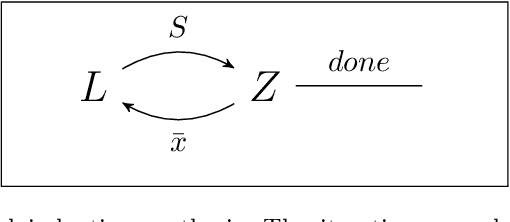
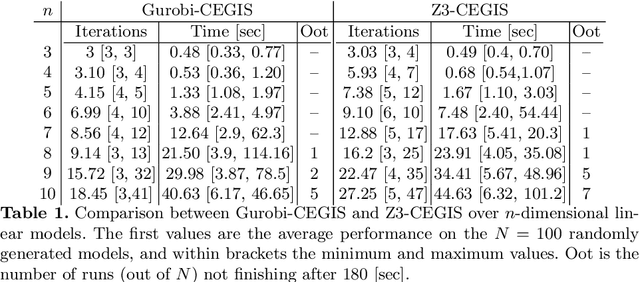
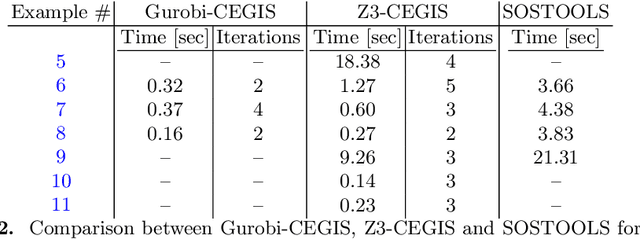
Abstract:In this paper we employ SMT solvers to soundly synthesise Lyapunov functions that assert the stability of a given dynamical model. The search for a Lyapunov function is framed as the satisfiability of a second-order logical formula, asking whether there exists a function satisfying a desired specification (stability) for all possible initial conditions of the model. We synthesise Lyapunov functions for linear, non-linear (polynomial), and for parametric models. For non-linear models, the algorithm also determines a region of validity for the Lyapunov function. We exploit an inductive framework to synthesise Lyapunov functions, starting from parametric templates. The inductive framework comprises two elements: a learner proposes a Lyapunov function, and a verifier checks its validity - its lack is expressed via a counterexample (a point over the state space), for further use by the learner. Whilst the verifier uses the SMT solver Z3, thus ensuring the overall soundness of the procedure, we examine two alternatives for the learner: a numerical approach based on the optimisation tool Gurobi, and a sound approach based again on Z3. The overall technique is evaluated over a broad set of benchmarks, which shows that this methodology not only scales to 10-dimensional models within reasonable computational time, but also offers a novel soundness proof for the generated Lyapunov functions and their domains of validity.
Automated Formal Synthesis of Neural Barrier Certificates for Dynamical Models
Jul 07, 2020

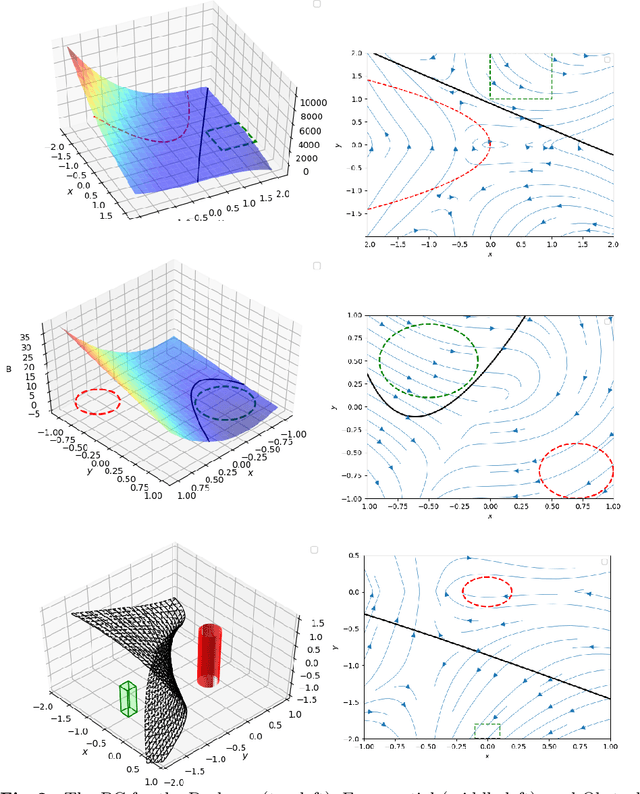

Abstract:We introduce an automated, formal, counterexample-based approach to synthesise Barrier Certificates (BC) for the safety verification of continuous and hybrid dynamical models. The approach is underpinned by an inductive framework: this is structured as a sequential loop between a learner, which manipulates a candidate BC as a neural network, and a sound verifier, which either certifies through algorithmic proofs the candidate's validity or generates counter-examples to further guide the learner. We compare the approach against state-of-the-art techniques, over polynomial and non-polynomial dynamical models: the outcomes show that we can synthesise sound BCs up to two orders of magnitude faster, with in particular a stark speedup on the verification engine (up to five orders less), whilst needing a far smaller data set (up to three orders less) for the learning part. Beyond the state of the art, we further challenge the (verification side of the) approach on a hybrid dynamical model.
Automated Formal Synthesis of Lyapunov Neural Networks
Mar 19, 2020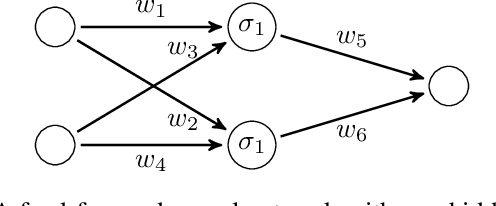
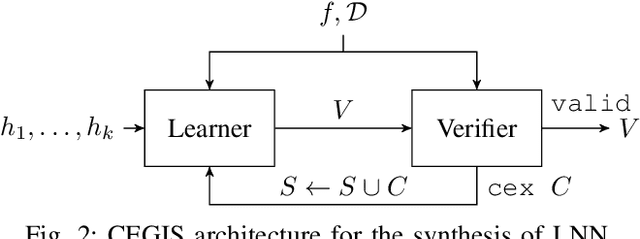
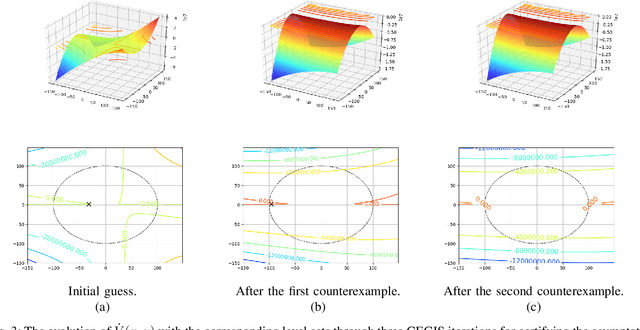

Abstract:We propose an automated and sound technique to synthesize provably correct Lyapunov functions. We exploit a counterexample-guided approach composed of two parts: a learner provides candidate Lyapunov functions, and a verifier either guarantees the correctness of the candidate or offers counterexamples, which are used incrementally to further guide the synthesis of Lyapunov functions. Whilst the verifier employs a formal SMT solver, thus ensuring the overall soundness of the procedure, a neural network is used to learn and synthesize candidates over a domain of interest. Our approach flexibly supports neural networks of arbitrary size and depth, thus displaying interesting learning capabilities. In particular, we test our methodology over non-linear models that do not admit global polynomial Lyapunov functions, and compare the results against a cognate $\delta$-complete approach, and against an approach based on convex (SOS) optimization. The proposed technique outperforms these alternatives, synthesizing Lyapunov functions faster and over wider spatial domains.
 Add to Chrome
Add to Chrome Add to Firefox
Add to Firefox Add to Edge
Add to Edge